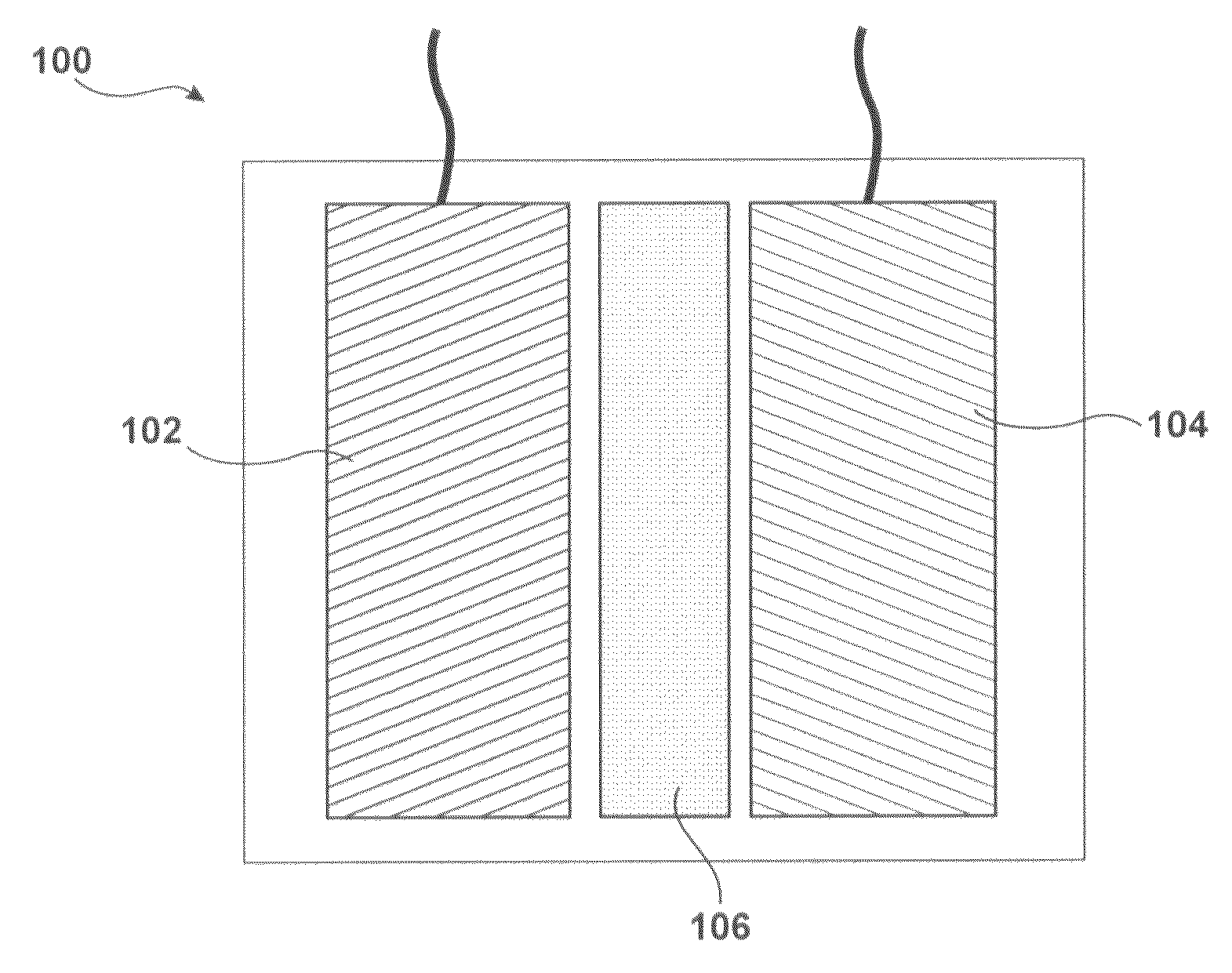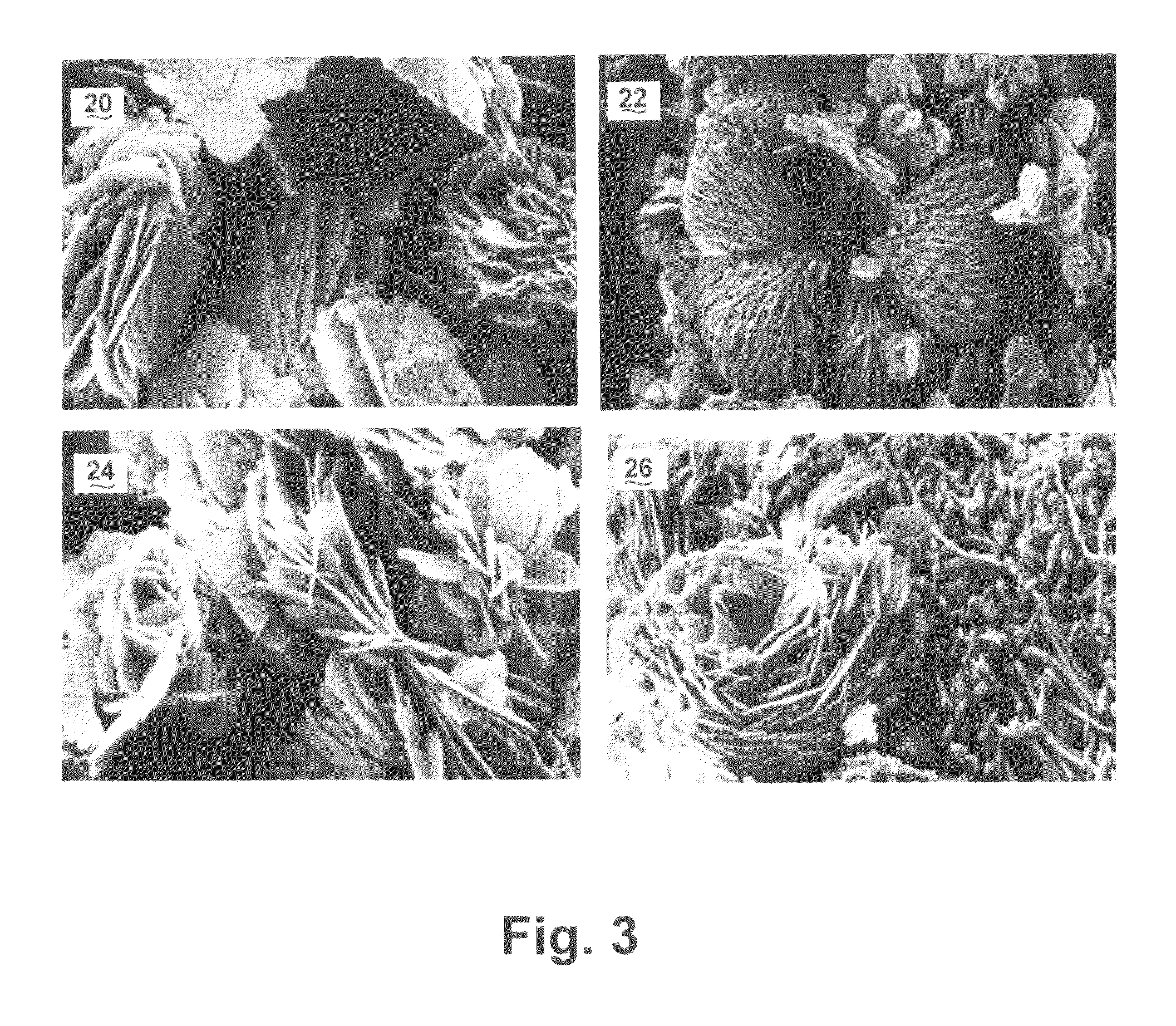Lithium battery with silicon-based anode and silicate-based cathode
a technology of silicon-based anodes and lithium-ion batteries, which is applied in the direction of cell components, final product manufacturing, sustainable manufacturing/processing, etc., can solve the problems of loss of capacity and rate capability, loss of 10 to 50% of available lithium ions, and cycle irreversibility, and achieve excellent cycling efficiencies, high energy capacity, and enhanced cycling efficiency of silicon and carbon nanofiber composite negative electrodes
- Summary
- Abstract
- Description
- Claims
- Application Information
AI Technical Summary
Benefits of technology
Problems solved by technology
Method used
Image
Examples
Embodiment Construction
[0075]Silicate-based positive electrodes were synthesized using unique preparation methods to form the proper particle crystal structure, composition, size and morphology (platelet with optimized Li+ diffusion pathway). Among the various silicate structures, those with proper ratios of mixed metal / SiO4 (Li2MSiO4, M=mixed multi-redox transition metal centers) were synthesized to further enhance their energy storage capacity and maximize the number of redox electron exchanges and the available sites for lithium ions. The voltage profile of the silicate was tuned by proper selection of mixed transition metals, lattice parameters, and silicate anion packing density. By using a polyol process with a low cost surfactant, a single phase, pure Li2MnSiO4 with rose-flower geometry, having thin sheet layer silicate with sheet thickness of about 10 nanometers was created. The scanning electron microscopy (SEM) results favored flake-like structures.
[0076]The electrical and ionic conductivity of ...
PUM
| Property | Measurement | Unit |
|---|---|---|
| thickness | aaaaa | aaaaa |
| thickness | aaaaa | aaaaa |
| thickness | aaaaa | aaaaa |
Abstract
Description
Claims
Application Information
 Login to View More
Login to View More - R&D
- Intellectual Property
- Life Sciences
- Materials
- Tech Scout
- Unparalleled Data Quality
- Higher Quality Content
- 60% Fewer Hallucinations
Browse by: Latest US Patents, China's latest patents, Technical Efficacy Thesaurus, Application Domain, Technology Topic, Popular Technical Reports.
© 2025 PatSnap. All rights reserved.Legal|Privacy policy|Modern Slavery Act Transparency Statement|Sitemap|About US| Contact US: help@patsnap.com



